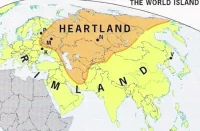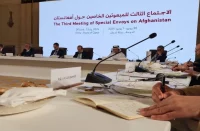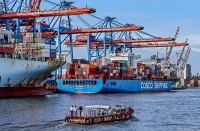Ashfak Cyal (Pakistan)
Introduction
Pakistan and Afghanistan finally concluded trade Transit agreement. According to the agreement Pakistan would allow Afghanistan to trade with India through Wagha border but same facility will not be enjoyed by India as Pakistan showed reservation that India might influence in the region and maintained that RAW would become operational in the country. Pakistan’s parliament gave approval to the agreement in the presence of US secretary of state Hillary Clinton. The agreement received mixed reaction from public, political, and economic analysts.The Information Minister Qamar Zaman Qaira appreciated the accord and termed it landmark achievement. “The deal is expected to bolster Pakistan’s exports to Afghanistan and Central Asia”
He said while talking to the journalists in Islamabad. While the Pakistani local businesspersons and traders created hue and cry and expressed concern that it would cost Pakistan by pouring smuggled goods from Afghanistan, which would ultimately undermine the local industry. Whereas Federal minister for trade, and commerce rejected all the apprehension in the wake of this agreement.
Content of Agreement
According article V of GATT (1947) Pakistan is obliged to give trade route with customs duty and other charges to Afghanistan, which is landlocked country with an area of 652,000 sq. kms, and the nearest route to trade with is through Pakistani port. Karachi port has served long for this purpose for a long time and Afghanistan is solely dependent on Pakistan for its transferring of goods. Ironically, the country having economically bound share good relations, but unfortunately both the countries (Pakistan and Afghanistan) have always remained at daggers dawn with each other. Since Afghanistan is mountainous region and lacks industrial units so the people resort to smuggle goods from central Asian region to Pakistan for their livelihood. As a result, smugglers established “Bara market” in Peshawar, Quetta, and Karachi as hub for smuggled goods. This difficult situation put the government and local industrialists into confusion and entrepreneurs keep forcing government to take stern action to cope with this menace as this black economy costs much to government exchequer and it is difficult for the local traders to compete with smuggled goods.
History
Government of Pakistan gave trade permission to Afghanistan in 1965 and total trade between the two countries reached $.12.00 billion in year 2000. In the wake of 9/11 and stay of allied and American forces in Afghanistan once again brought Pakistan to the front line position. Many development projects began in Afghanistan and it called for logistic support from Afghanistan. Pakistan supplied cement, steal, leather, plastic, and electric goods and food items to Afghanistan. According to estimate, Afghanistan’s 80% supply goes through Karachi port. This thing not only boosted up the Pakistan economy but also transportation trade. Thousands of trucks and containers are seen traveling around the country from Karachi to Khyber to convey goods.
Afghanistan, initially, was not at ease with the condition that Pakistan would allow trucks loaded with Afghan goods for Indian markets and after unloading, will return to Afghanistan with empty or loaded with Pakistani goods but not Indian goods. However, after the involvement of US secretary the agreement was signed. To ensure no transporting of goods from India those containers would be used which are in conformity with international specification for perishable goods are laced with tracking device.
Why Pakistani local traders are making hue and cry for this deal is obvious. According to them, they would stand between Scylla and Charybdis previously they were encountering with Afghan smuggled goods but they now would be facing from India as well. They further maintained that Pakistan government has not been able to stop illegal trades with Afghanistan from last fifty years hence such measures carry no weight to stop smuggled goods from India. According to analysts Indian goods are being smuggled in Pakistan from Dubai and other routes however this trade facility would not prevent Indian goods to penetrate into Pakistani soil and once Indian goods reach Pakistan it would nip the Pakistani market in the bud. The reason being the Indian industries and manufacturing units are subsidized by the Indian government, which lowers the production cost. On the other hand Pakistan’s industrial units are less subsidized and production cost is much high as well. The main reason behind it is low economic activity due to energy crisis and law and order.
Critics
Some critics describe it blow for the economy. Vice- president of federation of Pakistan Chambers and Commerce (FPCC), Zakria Osman says that Afghanistan wants to derive illegal benefit from this agreement, which will definitely ruin the ailing economy of Pakistan. “The loss sustained due to such smuggling would reach to $.5.00 billion annually”, Dr. Bilal Ahmed, veteran economic teacher at Quaid e Azam university Islamabad told while interviewing private TV channel. Pakistan has increased its security towards the borders touching Afghan region specially at the passes where Afghan embargo enters into its country i.e. Peshawar-Torkham, Chaman –Ghullam Khan Kheli and region of North West. Pakistani customs Department have repeatedly complained about the illicit trade from Afghanistan and have captured a range of narcotic stuff at the port, but such smugglers have strong tie with the Pakistani politicians that these culprits are set free on political round and thus this trade has become flourishing trade since many decade. Customs department captured many containers carrying weapon, suicide jackets, and other explosive material being carried to Afghanistan. Tyre Industry is badly affected in Pakistan due to illicit trade. Waheed Kakar, dealer of the Tyre Company based in Quetta, mentions that tyre industry has completely come to naught as 70% tyre trade is executed through smuggling.
Conclusion
Keeping in current political and economic scenario both countries are victim of terrorism and poverty, it is high time both the countries united and forget all the biases and enmity. Afghanistan should realize that Pakistan is its need for economic survival and Pakistan should consider that friendly relation with Afghanistan can guarantee penetration to the CARs regions for trade and commerce. it is too much to blame each one. There are various countries, which have hostile relation but they have good economic relation. Nepal is landlocked country is situation is same like that of Afghanistan but both have taken stern measure to stop smuggling. Following the suit Pakistan and India must develop robust strategy to boost economy which is in the very of interest of the nation of both countries.
ORIENTAL REVIEW thanks Mr.Ashfak Cyal from Karachi, Pakistan for his kind exclusive contribution.














There are 31 countries in the world that do not have a sea, these are also amongst the poorest; 16 of the 31 landlocked countries are classified as Least Developed Countries. Nine of the twelve countries ranked lowest on the 2002 Human Development Index are landlocked. Although landlocked developing countries represent 12.5 per cent of the world’s land area and 4 per cent of the global population, their combined gross domestic product accounts for only 0.3 per cent of the total.